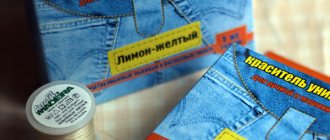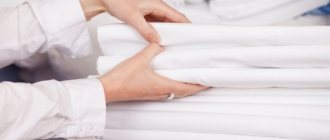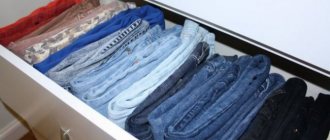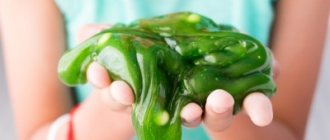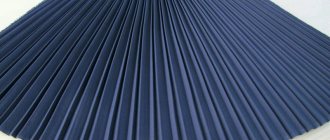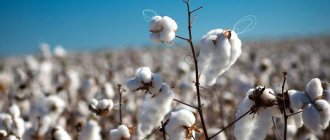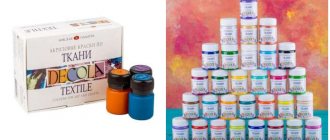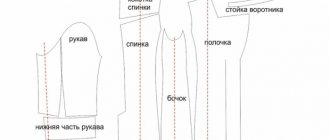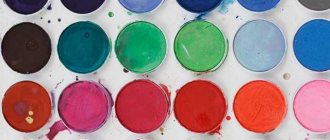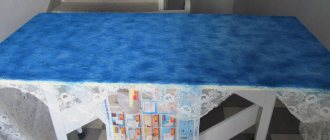Whether knitwear will pill or not depends on a large number of factors. And most of this cannot be determined visually when purchasing, unfortunately. But some factors can be seen with good eyesight, a magnifying glass or a macro lens on an iPhone.
The composition of the knitwear does not affect the formation of pills at all. Both pure cotton rolls perfectly, and pure polyester. And other products with the same composition can be worn for years without problems.
But the degree of twisting of the threads that were used to make the fabric has an effect, and this can at least somehow be noticed.
If the thread was poorly twisted during production (and this reduces its cost), then with friction and washing the thread begins to lose fluff, which over time turns into pellets.
In the first photo the threads are poorly twisted, but in the second they are well twisted.
This is a photo of an inexpensive sweater from Zara. Worn for less than 2 months and very rarely. Wash 2-3 times on gentle wash. Everything is covered with fluff and in some places it begins to become covered with pellets. Composition: 65% polyester, 35% cotton
Inexpensive hoodie from Kropp, worn for about a month and not often, washed once. Everything is already covered with fluff and pellets are beginning to form. Composition: 97% cotton, 3% elastane
Nike hoodie, bought 2 years ago, worn a lot and often, washed very often, even after 2 years there is less fluff on it than on the first two sweaters. The elastane on the cuffs has collapsed, but the knitwear itself looks more or less decent. It cost 2-3 times more than the first two sweaters. Composition: 52% cotton, 28% viscose, 20% polyester
In general, if you have a macro lens, a magnifying glass, or very good eyesight, you can focus on the twist of the threads when purchasing knitwear.
The less return (waste) was used in production, the lower the pillability (formation of pellets). The use of longer fibers, thinning the cross-section and reducing the length of the overlap in the fabric, reducing the length of the loop and the use of special chemical impregnations also leads to a decrease in pillability. They use singeing, cutting products, and heat setting.
Is it worth getting rid of things if the fabric from which it is made begins to fluff and roll into lumps? The appearance has lost its attractiveness, so it becomes impossible to wear clothes. Without regret, skirts and trousers are scrapped if they have served their useful life. But pills can also form on new clothes. For example, a coat. It is not cheap, so throwing away such things is expensive for the budget. In this article you will learn why such defects occur and how to eliminate them.
Quality of cotton knitted fabrics
1. EXTRA PENYE/PENYE COMPACT - superior quality fabric, made from long-staple cotton. Knitted fabric of foam compact quality is smooth and silky, holds its shape well, is resistant to wear and shrinkage after washing, is not subject to pilling (does not pill), and has reduced creasing compared to fabrics of lower quality. Quality COMPACT is a new production of cotton, it is of higher quality than Peñe.
2. PENYE is a special type of knitted fabric of high quality. It is distinguished by its impeccable weave and excellent thread polishing. There are no “nodules”, pellets or other defects on this type of canvas. “Penya” is silky and smooth to the touch, has a slight shine. The advantages of “singing” also include high resistance to deformation and abrasion. The canvas is easy to wash and is suitable for creating both everyday and festive items. “Penya” is produced from long-staple cotton using combed machines. The yarn used is the least porous and fleecy. This allows you to achieve smoothness and strength of the canvas. Penye yarn can be subjected to mercerization, a special treatment in which light “fluff” is removed from the surface.
3. CARDE/RING - made from medium-length fibers (27-35 mm). This knitted fabric is fleecy and slightly less smooth than foam.
4. OPEN END or OE - made from short fibers (20-27 mm). This knitwear is the least smooth; it has the so-called “fluff”, due to the small ends of the threads on the surface. In terms of cost, open end is the most inexpensive.
If we evaluate the quality of cotton knitwear on a five-point scale, then EXTRA PENYE/COMPACT PENYE will correspond to 5+, PENYE will correspond to 5 points, CARDE/RING - 4 points, OPEN END or OE - 3 points.
Trade secrets
There are ways to reduce the ability of any fabrics and fabrics to form pills. Unfortunately, whether the fabric has undergone special processing or not, the average consumer will hardly be able to find out how high-quality fibers were used in the production of the fabric.
Pillability is affected by fiber composition, thread structure, fabric structure and finishing. The less return (waste) was used in production, the lower the pillability.
The use of longer fibers, thinning of the cross section, increasing the twist of threads and reducing the length of overlap in the fabric, reducing the length of the loop and the use of special chemical impregnations also leads to a decrease in pillability. They use singeing, cutting products, and heat setting.
Legend for fabric composition:
| Main reduction | in Russian | in English |
| WO | wool | Wool Woole |
| W.P. | alpaca | Alpaca Alpaca |
| W.L. | lama | Lame Lame |
| W.K. | camel's wool | Camel Kamel |
| W.S. | Kashmir | Cashmere Kaschmire |
| W.M. | moxep | Mohair Mohair |
| W.A. | angora | Angora Angora |
| W.G. | vigunya | Vicuna Vikunja |
| Wu | guanoco | Guanaco Guanaco |
| S.E. | silk | Silk Seide |
| CO | cotton | Cotton Baumwoole |
| Li | linen | Linen Linane |
| J.U. | jute | Jute Jute |
| AB | abacus | Abace Manila |
| KE | kenaf | Kenaf Kenaf |
| R.A. | ramie | Ramie Ramie |
| Si | sisal | Sisal Sisal |
| A.C. | acetate fiber | Acetate |
| C.U. | copper-ammonia fiber | Cupro |
| MD | modal | Modal Modal |
| T.A. | triacetate | Triacetate |
| Vi | viscose | Viscose (rayon) Viskose |
| PC | nitrone (PAN) | Acrylic Polyacryl |
| M.A. | modified PAN (modacryl) | ModacrylicModacryl |
| PA | polyamide (nylon) | Nylon Polyamide |
| P.L. | polyester (polyester, lavsan) | Polyester |
| P.E. | polyethylene | Polyethylene Polyathylene |
| PP | polypropylene | Polypropylene Polypropylene |
| P.U. | polyurethane | Polyurethane Polyurethane |
| E.A. | elastane | Elastane Elasthan |
| A.F. | other fibers | Other fibers Sostige fasern |
Luxury clothes and pellets
Oddly enough, men are luckier in this matter than women. By buying a super wool suit, a 100% cotton pique polo and chino trousers, they can be 99% sure that the pilling problem will not affect them. And with knitwear in the luxury segment, as well as in the middle segment, everything is fine.
In women's luxury wardrobe there are more items of clothing that say 100% polyester. Cocktail and evening dresses, lingerie, and beachwear are almost 100% made from synthetic fibers. Is it another synthetic? I want to believe it, because you can only check it while wearing it.
And finally, we’ll help Nadezhda figure out the choice of fabric for her skirt.
For a given purpose, jersey is the most suitable knitwear.
Jersey is a heavy, most often dense knitted fabric, knitted industrially from wool, silk, viscose, cotton or synthetic threads.
JERSEY TODAY
The blend composition of modern jersey provides exceptional strength and wear resistance of the fabric. Finished products made from this knitwear hold their shape well and subsequently retain it - they do not stretch, do not stretch, and practically do not wrinkle during wear. Things made from jersey are very comfortable, they emphasize the advantages of the figure, and where there are flaws, they delicately hide them. It is thanks to these properties that jersey products are extremely popular.
Modern production technologies offer jerseys of different density, elasticity, composition and color.
To make the upcoming choice of fabric easier, decide which model you will sew from jersey and for what season.
The care of the finished product will depend on the composition of the fabric. Always focus on those fibers that have the most percentage composition in the purchased material.
Before cutting, jersey is decanted in warm water, as the fabric shrinks. Better yet, wash the cut as you would wash the product itself. Always consider this point when calculating the yardage before purchasing fabric. If the canvas is colored or has a printed pattern, decating (washing) will also show the durability of the paint.
CARE OF FINISHED PRODUCTS
Finished jersey items are washed only on a delicate cycle using soft powders at 40°C - this is the optimal temperature for almost any type of jersey. Spin at low speed. Dry jersey items laid out on a dryer or any flat surface. And only when the product is slightly dry can it be dried on a hanger, otherwise, under the weight of the fibers, the item may become hopelessly stretched and deformed.
Iron items made of wool and cotton jersey in the “wool” mode, both with a dry iron and with steam, and only along the loop columns, so as not to stretch the fabric, on the wrong side, so that there are no shiny marks (lames) left from the seams and the iron.
SEWING FEATURES
Woolen jersey is universal, you can even sew jackets and coats from it. Thick jersey can be sewn on a sewing machine using a straight stitch, as it has little stretch compared to other types of knitwear. And without the use of an overlocker, since the cuts of this fabric do not fray.
Jersey items can be lined with elastane or knitted fabric. Jersey is reinforced with simple interlining, unlike other types of knitwear.
Loops on jersey are punched only along the stitch posts, otherwise the edges will be wavy, sloppy and stretch out very quickly. This rule applies to any knitwear.
Knitwear
The looped structure of the material ensures high elasticity of bed linen, which easily takes the form of a pillow, mattress and blanket. Fine natural fibers give bedding softness and delicacy. The products are hygroscopic, allow air to pass through well, do not cause allergies, and retain color for the entire service life. Knitted underwear does not wrinkle, is easy to wash and dries quickly.
The same loop structure does not exclude the formation of puffs, which not only spoil the appearance of the fabric, but also quickly turn into unpleasant pellets.
The Ellina online store offers a large selection of bed linen made from high-quality fabrics at competitive prices. Delivery to any city in the Russian Federation is provided. Consultations are provided by telephone.
Wool.
Wool symbols: WO, ReineWolle, Schurwolle, Wool, Woole, Wolle, Merinowolle (merino wool).
A group of woolen and wool blend fabrics: broadcloth, cheviot, twill, tweed, Boston, carpetcoat, duvetin.
Artificial fabrics
– fabrics made from natural substances, most often cellulose.
Artificial fabrics have properties close to natural ones.
These include:
- Viscose How viscose is made:
https://youtu.be/n5pukpjFDOc - Modal (artificial cellulose fiber with water-repellent properties, viscose group), improved viscose.
- Cupra
- Acetate (Rayon-rayon)
Artificial fabrics have low pillability. Disadvantages include severe creasing.
Synthetic fabrics (synthetics)
made entirely of polymers.
These include:
- Polyester
- Elastane (also known under the names: spandex, lycra, elastane (trademark of the Invista company), dorslastan (trademark of Asahi kasei), lynel (from the company Fillattice)
- Acrylic (artificial wool)
- Polyamide, also known as nylon
Synthetic fabrics that have not undergone special treatment are prone to periodic, persistent formation of pills (pellets), which worsens the appearance of the products. Products made of polyamide (nylon, kodur), nylon, lavsan (polyester and polyamide fibers) are especially susceptible to pilling.
Of the synthetic fabrics, acrylic fibers are least prone to pilling.
Mixed fabrics
– natural with the addition of synthetic fibers. For example, polycotton (cotton-based fabric) may contain 60% cotton, 40% polyester. Blended fabrics are very common. By adding synthetic fibers to natural ones, manufacturers achieve improved basic properties. Such fabrics are more wear-resistant, wrinkle-resistant, and elastic. But they have a drawback - with a large percentage of synthetics in the composition, the formation of pellets is inevitable!
Group of natural fabrics
These are those that are made from animal or plant materials. These include: cotton, linen, wool, silk. Natural fabrics have low pilling properties. Natural cotton, linen, and silk do not form pills. Wool behaves interestingly - pillies can appear during the initial period of wear, and then, having rolled into balls, disappear.
Cotton
Cotton symbols: algodon (Spanish), cotton (English), baumwoole (German).
Cotton fabrics include: chintz, denim, cambric, calico, pique, poplin, voile, rosin, teak, percale, nansook, organdy.
You may hear the words mercerization, mercerized cotton.
Mercerization is a special treatment of fibers with caustic soda (sodium hydroxide alkali). Gives fabric shine, prevents fading, increases strength. To prevent a cotton item from wrinkles, the fabric is treated with urea-formaldehyde or melamine-formaldehyde resin.
100% cotton
100% mercerized cotton
“Loose” cotton with pellets
Cotton with a mixture of lycra without pilling
Natural fabrics shrink, remember this when caring. Read and follow the instructions on the product label.
Silk
Silk fabrics: crepe, crepe georgette, chiffon, silk linen, taffeta, satin, brocade, foulard, crepe de chine, faille, chesucha.
Wool
Wool symbols: WO, ReineWolle, Schurwolle, Wool, Woole, Wolle, Merinowolle (merino wool).
A group of woolen and wool blend fabrics: broadcloth, cheviot, twill, tweed, Boston, carpetcoat, duvetin.
Effective solutions
If you notice that pills have begun to appear on your garment, take immediate action. Thrifty housewives know what to do. Change the detergent, read the instructions, set the temperature correctly on the programmer of the automatic machine and the iron when ironing. Place the products inside the drum inside out. This will prevent the appearance of new defects.
To remove pellets that have already appeared, try one of the following methods:
1. On thick coat fabrics, fine-grained sandpaper helps. Rub the area where the rolled balls appeared.
2. Pants and skirts made of drape, denim, and wool can be cleaned with an old safety razor. Do this carefully, moving along the product so as not to inadvertently cut it.
3. Use a fine-tooth comb only if you are sure there will be no puffs.
4. You can try combing woolen fabrics made from angora or mohair with a toothbrush, guiding it along the fibers. Then wash the product, rinse with vinegar and dry in fresh air.
5. If you are a master at using nail scissors, then the pellets can be carefully cut off.
6. Buy a special machine that will deal with this defect in a matter of minutes. Be sure to carefully read the operating instructions, and only then proceed to work, so as not to damage the product.
With some effort, you can save your favorite item and extend its service life. If you don’t want to waste time on this, go to a dry cleaner, maybe they can solve this problem.
The quality of clothing refers to the evenness of the seams, the neatness of the finishing, the symmetry of the details and the quality of the fabric from which it is sewn. What matters is how long it will remain in its original form. Fading, abrasion, and pilling greatly spoil the appearance of the product. You can protect yourself even at the purchase stage - inspect, touch and read the ingredients. If the item is chosen correctly, with proper care it will please the eye for a long time. How to determine the quality of fabric?
It seems that the problem is proportional to the amount of the check, however, this is not always the case. Unfortunately, the cost of a thing does not guarantee durability, just as cheapness does not always mean low quality. We approach the issue wisely.
Quality fabric:
- after a week, two, three, a month it has the same appearance as when purchased;
- not subject to the formation of pellets (does not pill);
- does not deform with proper care;
- has no foreign odors;
- does not stain other materials during wear.
